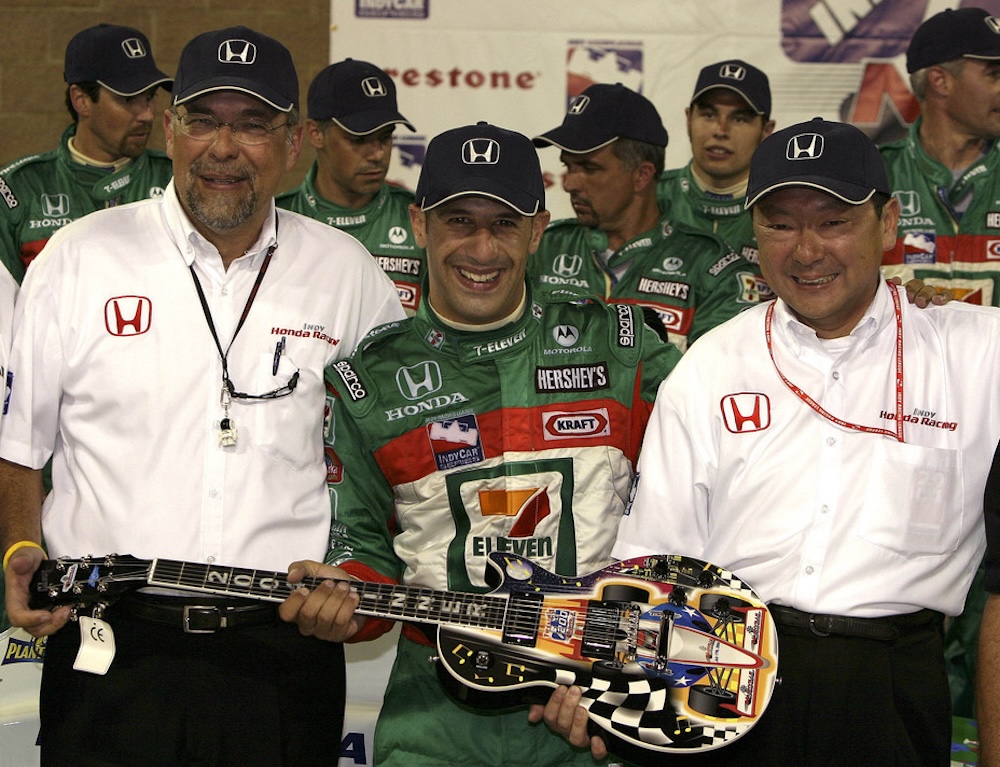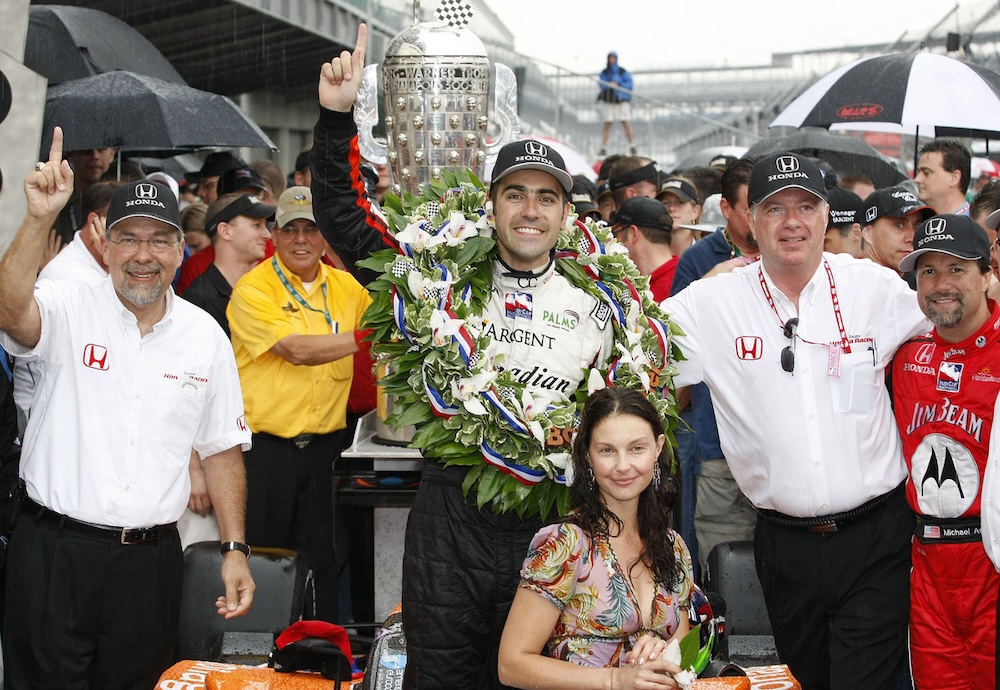Robert Clarke, the revered builder of Honda Performance Development (HPD), suffered heart failure on Saturday and died at the age of 75.
Creation was at the core of Clarke’s life. Excellence was the byproduct.
“A lot of Honda’s success rests on his shoulders,” said Chip Ganassi, who delivered Honda’s first IndyCar Series championship in 1996 with Jimmy Vasser and its most recent with Alex Palou in 2025. “He wasn’t somebody that made quick decisions. He thought about things and always did the right thing, and did the right thing again.”
At last count, HPD – known today at Honda Racing Corporation US – has produced 298 IndyCar wins from 544 races, 16 Indianapolis 500 victories, 15 Driver’s championships and 11 Manufacturers’ titles along with vast success in sports cars through the Acura brand with wins at all of IMSA’s major endurance races and multiple Manufacturers’, Drivers’ and Teams’ championships. All from its base of operations on a nondescript hilltop north of Los Angeles in the town of Santa Clarita.
Prior to arriving at American Honda Motor Corporation (AHM) in 1981, the Californian studied architecture at Texas Tech University, continued his education at the University of Notre Dame, and remained at the Indiana institution where he became Professor Clarke, teaching art and industrial design.
After spending five years as an educator, Clarke’s eye for detail and interest in motorized vehicles found an outlet in aftermarket motorcycle componentry design, and with his hiring at Honda, the amateur road racer spent the rest of the 1980s in motorcycle accessory and product planning roles. On the heels of Honda’s global success in Formula 1, which was facilitated from its Honda Racing factory in Japan and met its end after the 1992 season, the decision was made to bring Honda’s name back to open-wheel racing, but on the domestic stage in the CART IndyCar Series.
There was one significant problem to solve, however, as AHM lacked a factory of its own to service and support the CART program set in motion for 1994.
Enter AHM executive Tom Elliott.
“Basically, I was the direction guy and the money guy, and Robert was really the hands-on guy,” Elliott said. “He did everything. From the teams to the employees at HPD to the relationship at the time with CART and the rule-making. He was involved in everything hands-on. I was semi hands-on, but nowhere near as much as Robert. He was really the heart of HPD.”
Clarke took great pride in being HPD employee No. 1.
“Mr. (Koichi) Amemiya was the president of American Honda that time,” Elliott continued. “I had put together a concept of how open-wheel racing was going to be Honda and sports car racing was going to be Acura. We didn’t want to do racing in the U.S. the way that Honda did in Formula 1 at the time, because Honda was pretty much running their own team, but we wanted to supply engines and have multiple teams, not just one team. So we put together a budget and that’s when I started looking for somebody to run the place, which was Robert.
“I interviewed I don’t know how many people, a dozen, at least, and then, but Robert had an engineering background. He was interested in cars and racing. He wasn’t a loud guy. He was one of the quiet guys. I knew he was the right guy for the job. So he was the first employee of Honda Performance Development. And then we started looking for places to build the facility.”
Amemiya announced AHM’s CART plans in January of 1993 at the Detroit Auto Show. HPD went live in April with Elliott as its first president and Clarke as general manager and EVP.
The short timeframe facing the ambitious endeavor – Honda’s CART debut would take place 12 months later on March 20, 1994, at Surfers Paradise in Australia – meant Honda Racing in Japan would be responsible for creating its first 2.65-liter turbo V8 engines, code named the HRX.
HPD would receive and care for the motors from its West Coast facility. But first, the facility had to exist. Clarke, drawing from his education in architecture, became the architect of HPD.
“At the time, we’re talking later ‘92, because HPD opened early ’93, we looked outside of American Honda’s location in Torrance,” Elliott continued. “So we looked in Orange County, deep in Orange County, we looked in Northern California, and we looked in Northern LA at the Santa Clarita area, and their housing was affordable. They had good schools. It was growing. So we decided to locate in Santa Clarita, which is about a little over 50 miles from American Honda.
“We originally started with just a handful of employees. Japan was supplying the engines, developing the engines in Japan, and we were doing maintenance and rebuilds at the time. The long-term goal, obviously, was to develop people that we could eventually do our own engines, which we do now, and train people. And Robert was a huge part in developing all of that, getting the people, getting the right people, the building layouts, working with the city.
“I don’t think you have any idea how tough it was to get engine dynos installed in Santa Clarita… and the power grid, and selling power back to the to the city. There was just so many hassles there. And he was a trooper. He handled it all and brought HPD into what it’s known for today.”
Despite the high ambition and excitement surrounding AHM’s entry into CART IndyCar Series competition, Clarke’s exhaustive efforts to create a formidable program were not rewarded as HPD set out on its maiden campaign in 1994.
As the 2000s approached, CART was flooded with massive engine supply programs from Ford, Mercedes-Benz, and Toyota. But in 1993, only two competitive solutions were available with Ford at the top of the mountain and Chevrolet, which was leaving at the end of the year.

Honda Racing
Entering 1994, Ford’s Cosworth-built XB engine and the former Chevy powerplant, the unbadged Ilmor D, were the tickets to prosperity. Elliott’s desire to supply multiple teams with Honda’s unproven HRX engine was met with tepid interest; the only taker was 1992 CART champions Rahal-Hogan Racing, which lost its Chevy deal and sought to create something new and special with Honda. The union would be short-lived.
Overweight and underpowered, the HRX-powered Lolas failed to qualify for the Indianapolis 500, which caused great embarrassment for the team owned by Bobby Rahal and Carl Hogan, their sponsors, and placed immense pressure on Clarke and Elliott to pull HPD out of its year-one nosedive. California’s Comptech Racing, which won multiple IMSA touring car and GTP Lights titles for Acura, was added as a mid-season complement to Rahal-Hogan with Parker Johnstone as the driver, but the squad had a limited impact as it learned a new form of racing.
Prior to Rahal’s home race at Mid-Ohio in August of 1994, a fax was sent by the three-time IndyCar champion informing Honda and HPD of Rahal-Hogan’s intention to split with the company once the championship met its end in October.
Just over a year into the adventure, Clarke had built a nascent IndyCar program featuring a new facility, curried a significant development budget and had factory support to offer teams, but thanks to the high-profile issues at Indianapolis and the grand rejection by Rahal-Hogan, the IndyCar establishment turned its back on HPD.
On approach to 1995, Comptech was retained as a part-time effort, but there were no new takers for Honda and the HRX.
